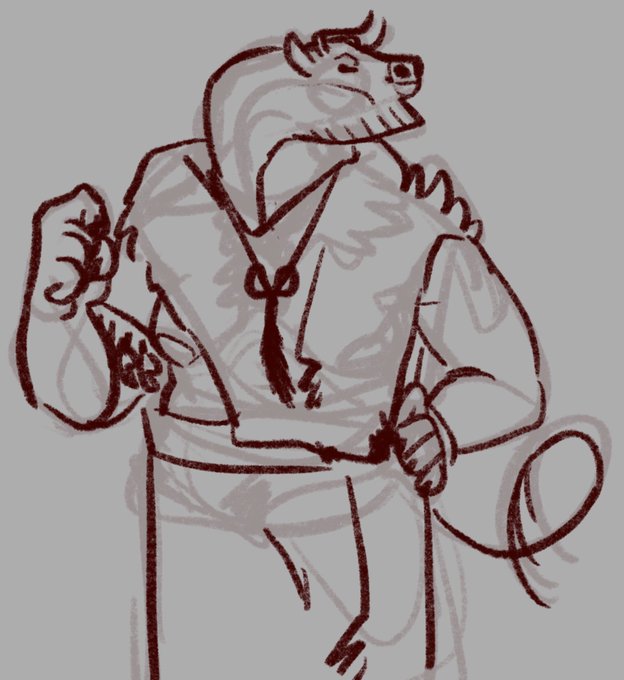ANTHROPOLOGYのTwitterイラスト検索結果。 411 件中 10ページ目
By the late 1950s, scientists had recovered #hominin fossils that showed that Australopithecus and Paranthropus were bipeds in a humanlike pattern. The pelvis evolved a form different from any other living or fossil primates. #paleoanthropology
The Stw 573 fossil #hominin skeleton is in the news today, for an interesting high-resolution examination of the bone tissue of its jaw. The skull first came to light in 1998. #paleoanthropology
Ancient Egyptian Manual Reveals New Details About Mummification https://t.co/Z2k8kdVD6S #archeology #anthropology #history
The Steinheim skull has been a puzzle in #paleoanthropology. Today, we know that genetic exchanges with Africa influenced early Neandertals, and #hominin fossils from Apidima, Greece close in age to Steinheim may reflect this mixing. Why not this one too? #FossilFriday
wazzup #FlockOfArtists my name is buck and im writing my anthropology degree multimodal thesis on one of my favorite ethnographic pieces, clifford geertz’s “deep play: notes on the Balinese cockfight” because i like roosters and double entendres! 🐓
We still don't know why the Ngandong fossil bed has so many—12— #hominin partial skulls, with no teeth or other bones except two tibiae. Early suggestions like cannibalism don't fully fit the data, but something curious happened to these H. erectus individuals. #paleoanthropology
The late Middle Pleistocene skull from Kabwe, Zambia, was uncovered a century ago. Today its place in the #hominin family tree is still an open question. Its population retained ancient diversity, yet may have been connected to modern people. #paleoanthropology #FossilFriday
The first skull to emerge from Dmanisi was D2280, also the largest at the site. Although this site no longer presents the earliest evidence of H. erectus, it remains the earliest #hominin fossil assemblage in Eurasia. #paleoanthropology
@Tigenki Not a species, but i have Kiro! They’re a human minotaur thing with a clay head that they sculpt. they live in a late paleolithic europe hunter gatherer band. Im a huge fan of anthropology and paleolithic art and they’re a way for me to really explore that!
The tall rami of the SK 23 #hominin mandible match the tall faces of other fossils attributed to its species, Paranthropus robustus. Isotopic evidence suggests it ate the same range of foods as the smaller-toothed members of our own genus, Homo. #paleoanthropology
On #DarwinDay, I want to recognize the Gibraltar 1 Neandertal skull. This year marks 150 since the publication of The Descent of Man, and this skull was the only skeletal evidence of an extinct human ancestor that Charles Darwin encountered. #paleoanthropology #FossilFriday
The "robust" #hominin lineage shows some differences between earlier and later P. boisei fossils from the East African Rift Valley. Omo 57-41 at 2.36 million years old is near the critical transition time. Maybe it's P. aethiopicus, or maybe not? #paleoanthropology
Fossil #hominin remains are often distorted when we find them, by natural weathering, moisture, or the weight of sediments that build above them. Sterkfontein, South Africa, has a complex array of depositional environments that left their mark on the fossils. #paleoanthropology
Pleistocene humans had bodies within the same range of sizes as living people. This hip bone from Arago, France, came from an individual of around 80 kg, not far from the weight of French men today. #hominin #paleoanthropology
Mary Leakey's team excavated the OH 13 partial skull in 1962. More recent work at the site has placed this #hominin skull as the last known appearance of Homo habilis. The species earliest appearance at Olduvai is only around 180,000 years earlier. #paleoanthropology
The mad professor and her edgy assistant.
#Anthropology #anthrotwitter #furry
LES1 is the most complete known for Homo naledi so far. Its morphology holds clues about the life of this #hominin individual that we are still working to understand. #paleoanthropology #FossilFriday
The AL 333 locality at Hadar is a striking assemblage of at least 13 #hominin individuals attributed to Australopithecus afarensis, including at least 4 children. How these individuals came to rest together is still not known, taphonomy rules out a flash flood. #paleoanthropology
The fossil hominins from Zhoukoudian, China, are among the best known Homo erectus samples. Approximately the same age as fossils from Spain attributed to H. antecessor, the connection between these #hominin populations is currently unknown. #paleoanthropology





























